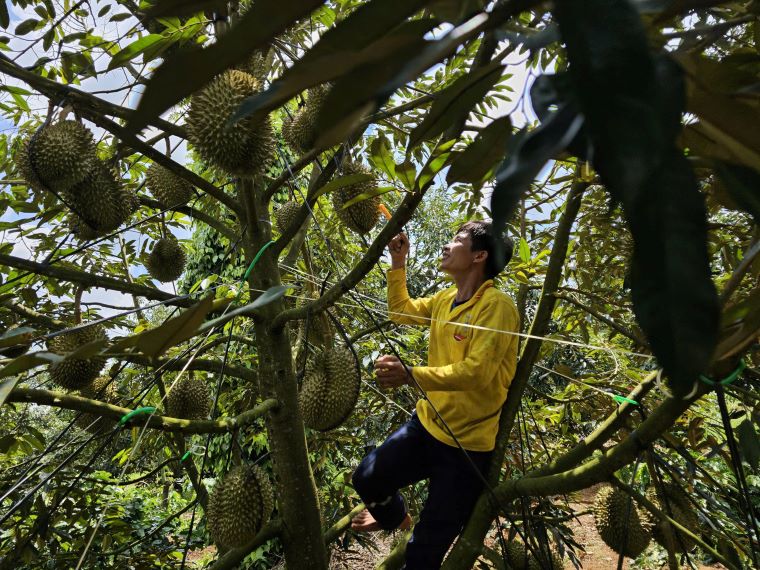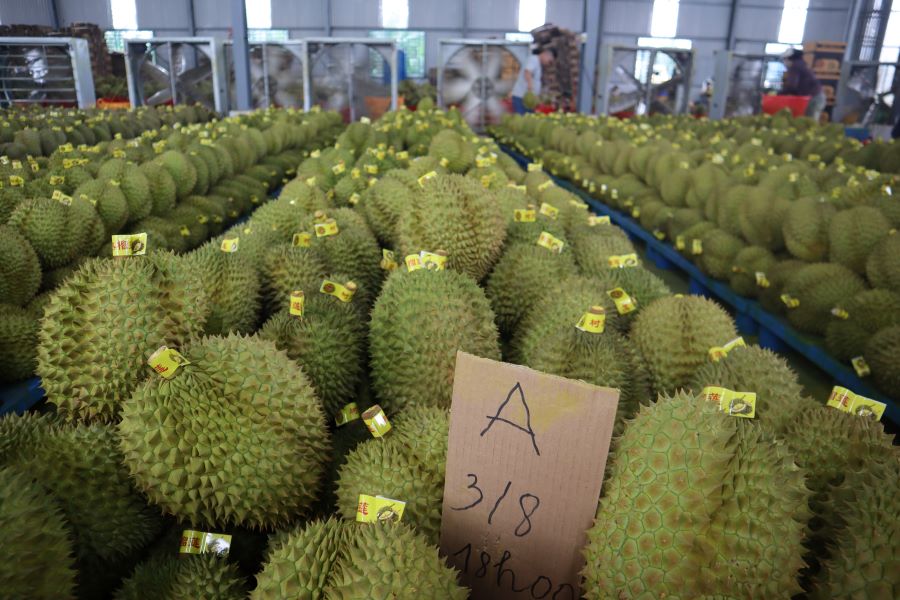Concerns of farmers
Mr. Nguyen Khac Hiep (Ea Knuc commune, Dak Lak province) said that in a few days, his family will harvest durian. According to Mr. Hiep, the issue that he is most concerned about right now is the assessment of durian quality.
According to research, this is not only a story of Hiep Ong but it is also a concern of many other farmers. Because currently, there is no separate set of standards for assessing durian quality.
The current quality assessment depends on the team of typists. Therefore, there is a situation where this person evaluates the quality as not being good, such as: Phi kim, sweetness, congestion... Meanwhile, the durian fruit falling into the hands of another typist gave another result.

Thus, just by distinguishing between type A and type B goods, farmers have lost half of their value. This causes farmers to suffer greatly. Therefore, many farmers hope to have evaluation standards so that the goods are bought and sold at the right value, transparently between sellers and buyers.
"My wish and many other farmers' wish is to have a set of quality standards. This creates convenience for garden owners and buyers as well as controlling the quality of durian, Mr. Hiep hopes.
There is no clear standard
Mr. Nong Ngoc Trung, Chairman of the Board of Directors of Canh Dong Vang Company, said that the quality of durian in Thailand is strictly controlled from gardeners to exporters. Therefore, durian in this country is rated higher, while in reality, Vietnamese goods are not inferior, even better.
According to him, the main cause is the moisture of durian, an extremely important factor. Thailand has applied strict laws to the durian industry, while Vietnam still does not have a clear set of standards.
Mr. Trung said that if Thai durian is cut at a humidity of over 68%, there will be immediate intervention from the authorities. Meanwhile, in Vietnam, the moisture in durian is often 72-75%, leading to poor quality and not meeting market requirements.
According to Mr. Trung, the higher the humidity, the more sweetness decreases, it is prone to spoilage and of poor quality. Therefore, Dak Lak needs to pilot quality standards for durian.
"Enterprises also need to save themselves before waiting for support from others. This can be done by applying modern packaging technology and optimizing the production process, said Mr. Trung.

Regarding the above issue, the Dak Lak Provincial People's Committee recommends that the Ministry of Agriculture and Environment soon complete the mechanisms, regulations, and standards for durian to meet the increasingly high requirements of the international market.
While waiting for a set of standards, the Dak Lak People's Committee has issued a Directive on durian production and consumption in 2025 in the province.
In particular, the Dak Lak Provincial People's Committee requested propaganda, not to harvest young durian. There are strict measures to handle cases of harvesting and trading of young durian.
Dak Lak province has nearly 40,000 hectares of durian, the second largest output in the country. In 2025, the whole province is estimated to reach over 390,000 tons of durian.











